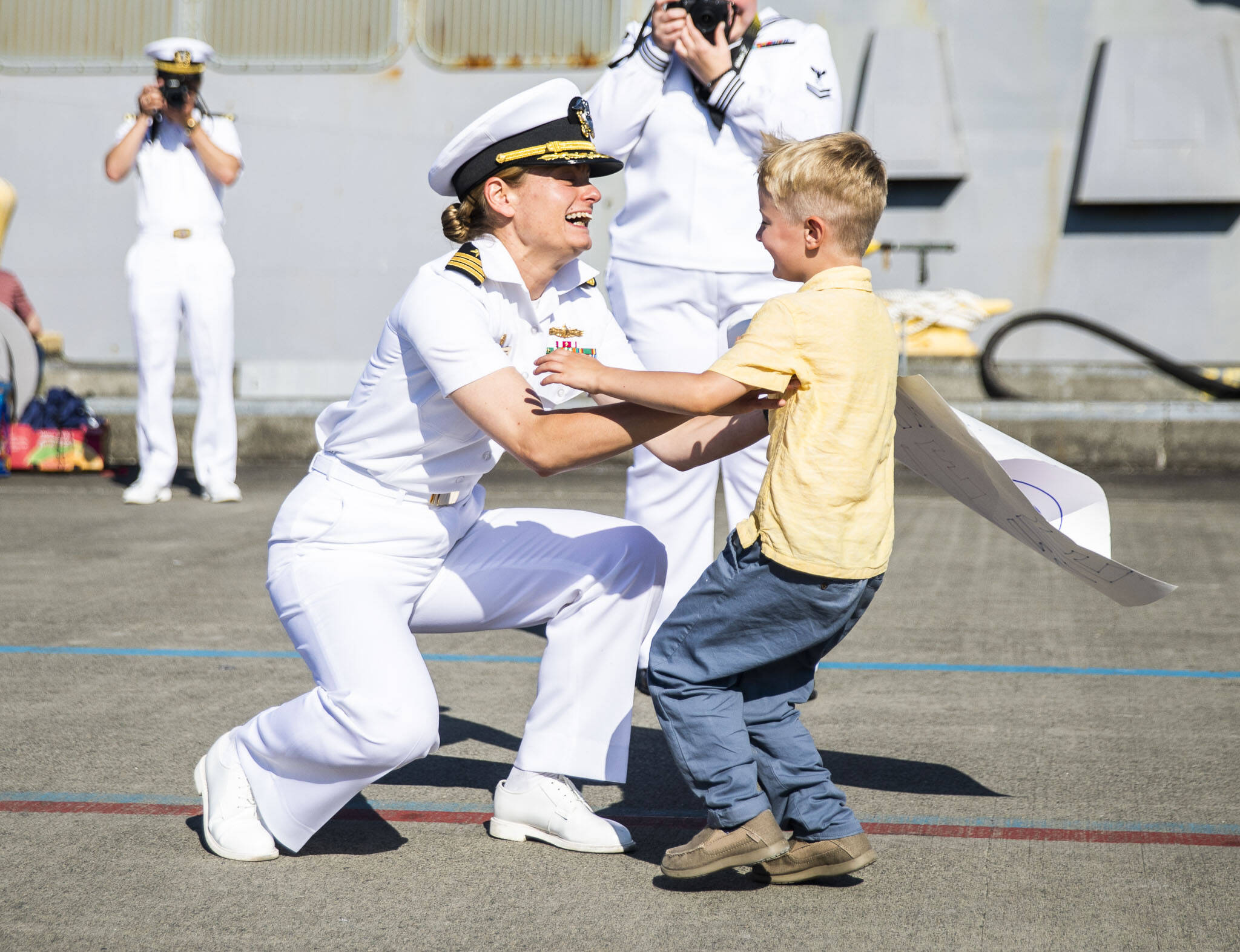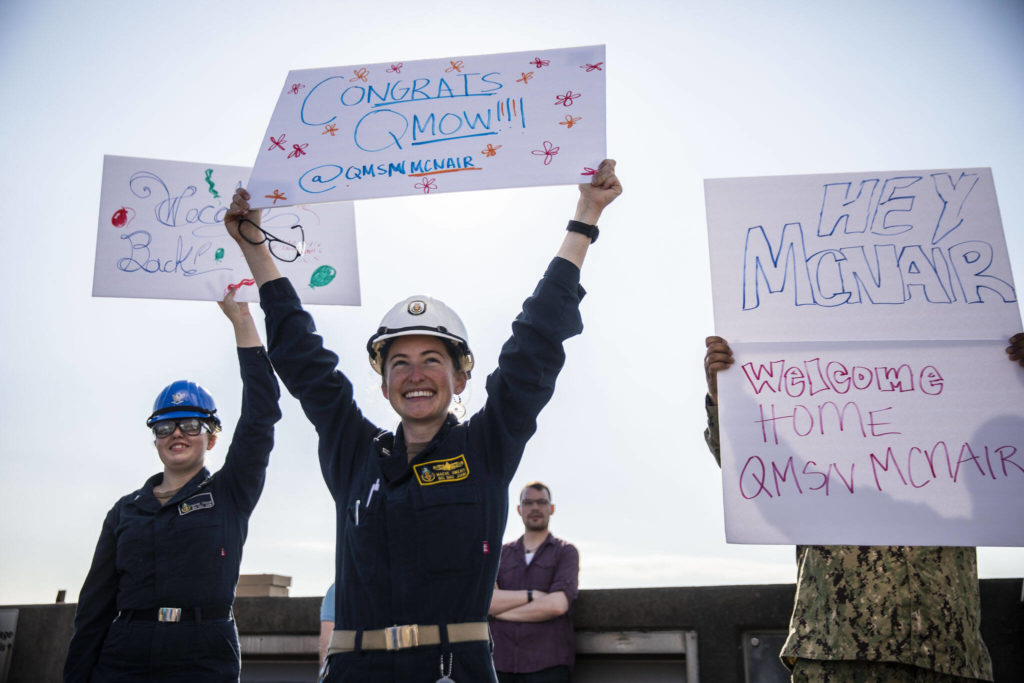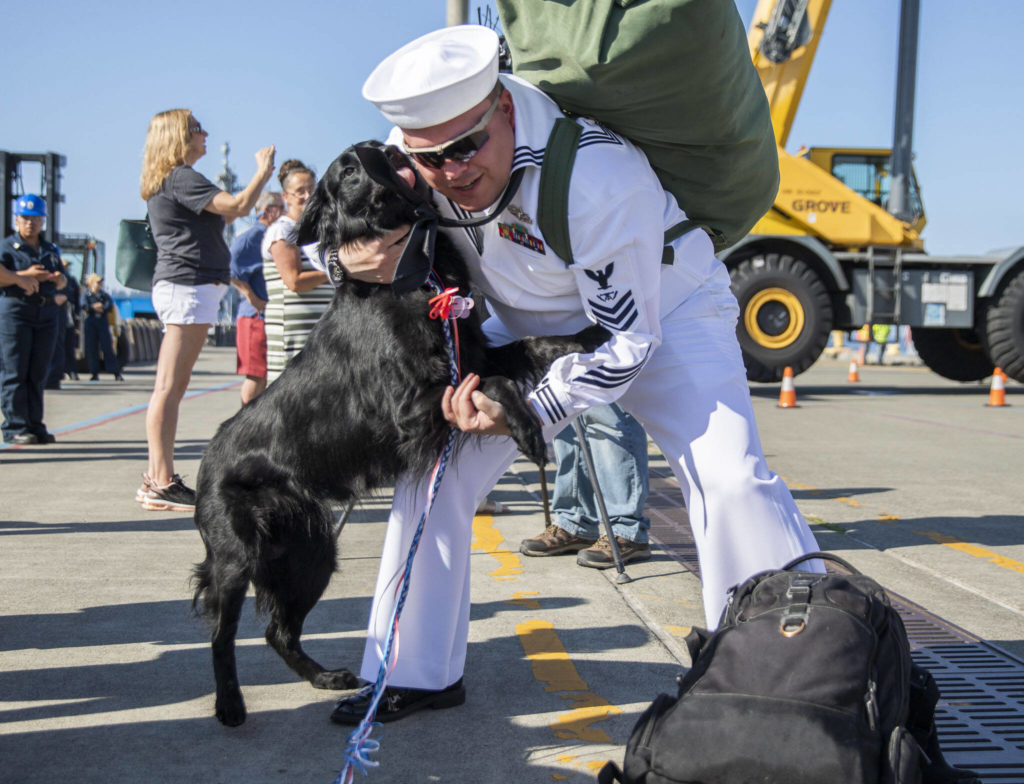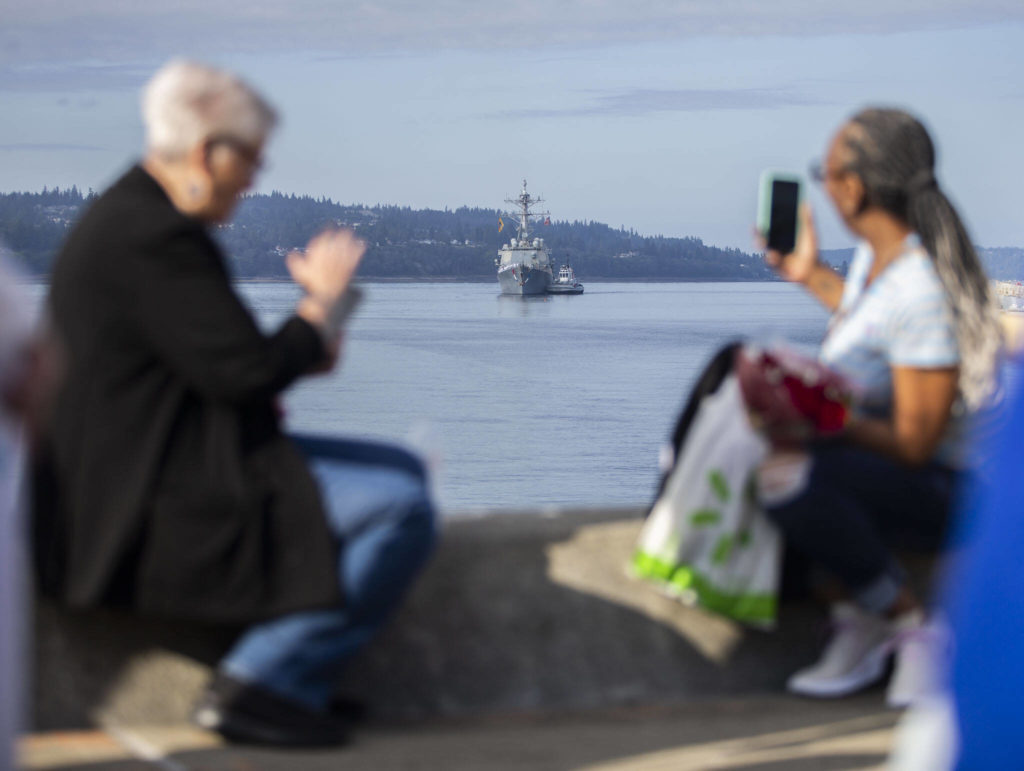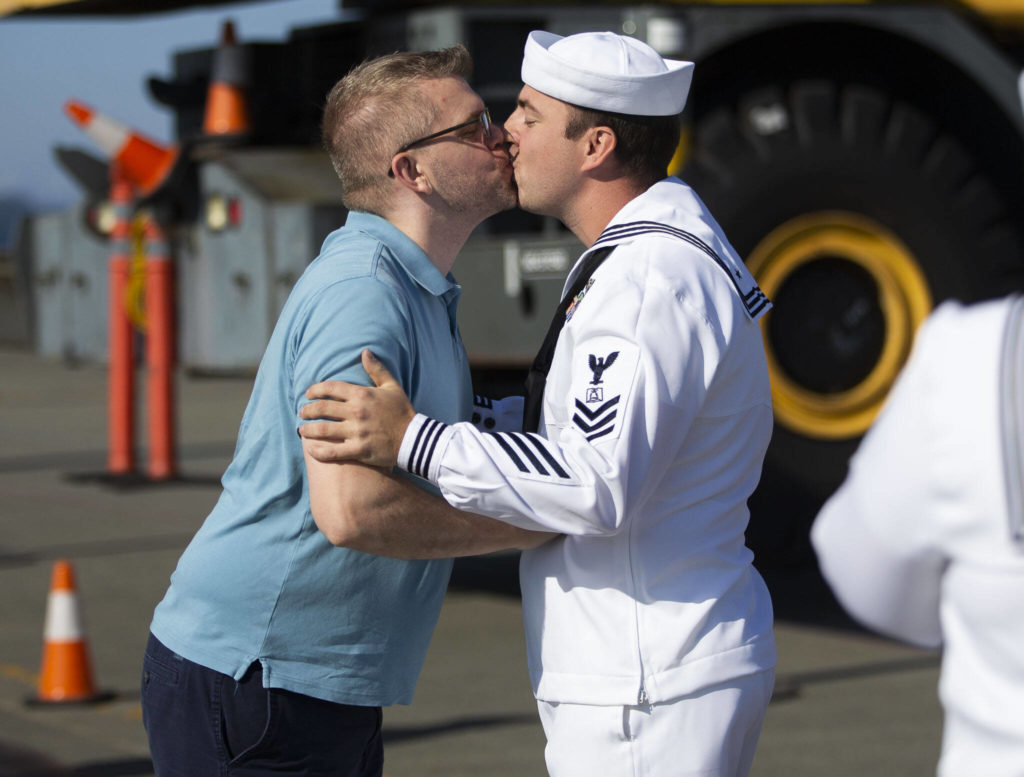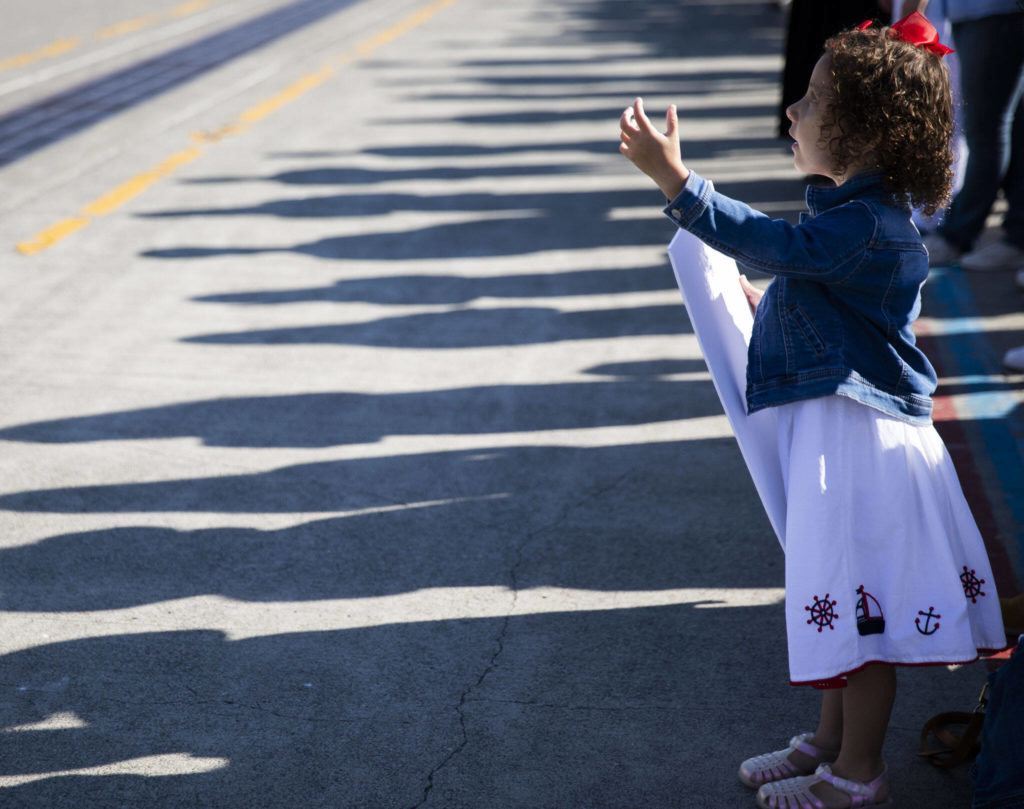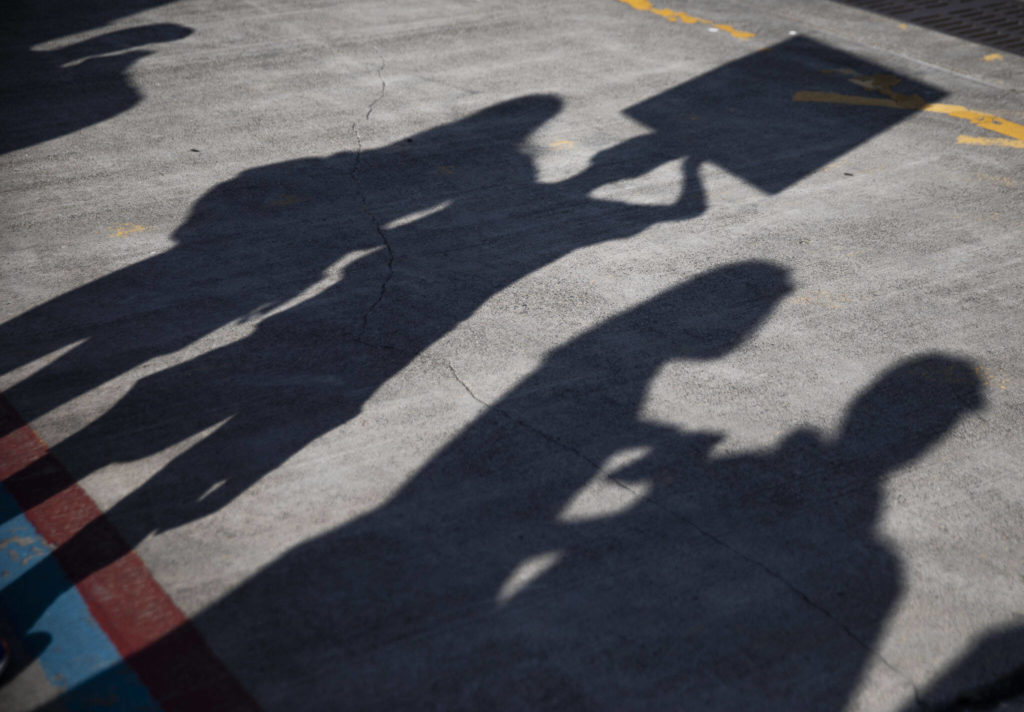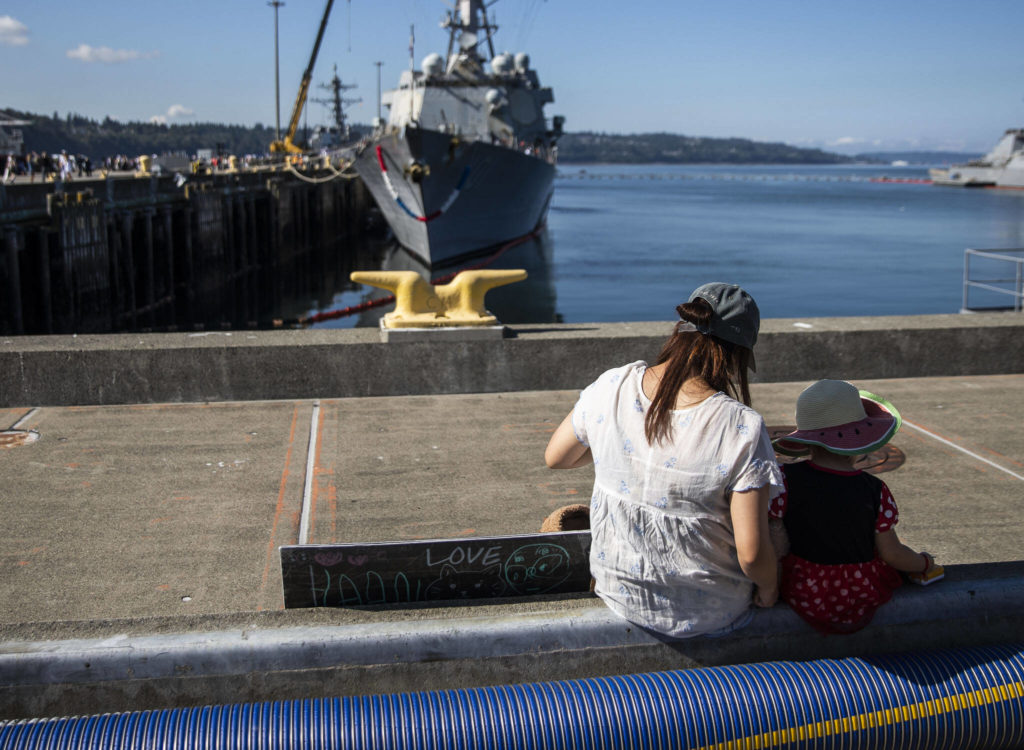EVERETT — Four-year-old Grady got a running start Thursday morning when he saw Commanding Officer Meghan Bodnar make her way off the USS Gridley.
He dropped the sign he and his brother Duncan, 9, were holding for hours, “Welcome home mommy,” as they waited for the 509-foot destroyer to return to its homeport at Naval Station Everett.
The ship, commanded by Bodnar and Executive Officer Katie Whitman, departed Everett in December joining Carrier Strike Group Three, led by the Nimitz-class aircraft carrier USS Abraham Lincoln.
A ship commanded solely by women in the U.S. Navy is “pretty rare,” Bodnar said. For families sending their daughters on their first deployment, it was pretty special, too.
Jenny Figueroa, 21, waited anxiously on the pier for her fiancee Alexis Wighaman, 30, to roll in. The couple met in bootcamp and their relationship had been mostly long-distance for the past two years. But four days ago Figueroa moved from Virginia to Everett.
“That was literally perfect,” she said.
About 21% of the U.S. Navy’s 11,000 Surface Warfare Officers are women, according to a 2021 article from the Navy’s press office. Most leadership positions are still held by men.
“I had a female commanding officer when I was a lieutenant,” Bodnar said. “And that’s actually probably about it.”
Women had been banned from serving on Navy submarines until 2010. And while women have made up an increasing fraction of U.S. military personnel in recent years, they’re about 28 percent more likely to leave the service early, with many citing “uncertain work schedules, impacts of deployments on their family lives, (and) family-planning issues such as pregnancy,” according to 2020 reporting in Stars and Stripes.
The commanding officer’s husband Kendall Bodnar said he went through all of the stages of grief while his wife was away. The kids stayed busy with taekwondo, Cub Scouts and swimming while mom was at sea. But their excitement couldn’t be contained in the weeks leading up to her return.
“They’re very proud of her,” Kendall Bodnar said, “and they realize that you can do anything if you work hard.”
Just a few hours later, the USS Sampson rolled in to the tune of “We Are Family” by Sister Sledge blasting from the ship’s gray exterior speakers: “I got all my sisters with me.” Hundreds of family members and friends cheered and waved.
The two Arleigh Burke-class guided-missile destroyers followed similar paths since their deployment last winter.
The Gridley worked alongside the U.S. Coast Guard in counter-smuggling operations in the Gulf of Oman. Its Helicopter Maritime Strike Squadron aided in operations in France, the United Arab Emirates and Pakistan.
The Sampson left Everett in December. While on their way to the South China Sea, sailors stopped to provide aid to Tonga after a tsunami. In the sea, the crew helped salvage a downed F-35 from the USS Carl Vinson.
The roughly 300 sailors on each ship participated in RIMPAC, the world’s largest international maritime warfare exercise from June 29 to August 4. The exercise was attended by 26 nations, 38 ships, four submarines, over 170 aircraft and over 25,000 people.
Kathy Higgins clutched a bouquet of red roses against her blue striped Levi’s shirt, squinting into the sun as she looked for her daughter Koda Higgins-Hall to come down the Gridley’s ramp.
The last time she saw her daughter was when they drove to Everett from New Orleans early this year. She said they “took the wrong route.” They ended up driving through snowy national forests in northern California and Oregon at night.
“I’m wondering why we don’t see anybody on the road,” she said, laughing, “because they know better.”
Kathy Higgins is an Army and Air Force veteran, so she was less worried and more excited when she saw off Koda Higgins-Hall about eight months ago.
“You have to let them go out and venture the world,” she said.
Mike Bencini, the USS Sampson’s commanding officer, said after 18 years in the Navy he has seen almost everything. But this trip was special. Their ship was the first during the pandemic to come to port in Brisbane, Australia.
For many on both ships, it was their first deployment.
“Everything that they’re experiencing is the first time they’re doing it,” said Whitman, the Gridley’s executive officer.
The Saxena family took a six-hour evening flight from Philadelphia so they could hug their son as he came down the Sampson’s ramp. It was his first time coming home from sea.
“I always encouraged my son: Go on and learn,” Sandeep Saxena said. “Keep learning.”
Isabella Breda: 425-339-3192; isabella.breda@heraldnet.com; Twitter: @BredaIsabella.
Talk to us
> Give us your news tips.
> Send us a letter to the editor.
> More Herald contact information.
